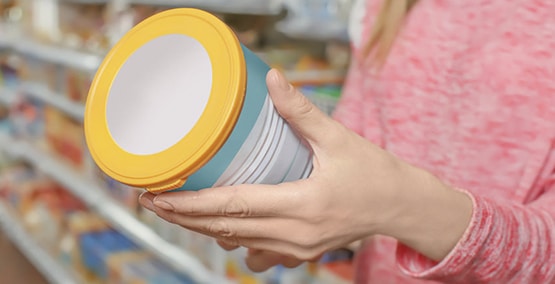
When and how to switch formulas
With many different kinds of infant formula on the market today, it can be overwhelming to know which one is the best for your baby <<Formula confusion>>. It can be tempting to want to constantly change formulas based off of advertising or recommendations from friends and family; however, if your baby does well on her or his current formula, you likely do not need to switch to a "better" one. On the other hand, if you suspect your baby may not be tolerating her or his formula well, we have some tips on how to safely switch to a new product.
Give the new Formula a Proper Chance
It takes time for a baby to fully adjust to a new formula. For example, if you switched to a new formula to help with your baby's reflux, it could take up to a week to begin seeing improvement in his or her symptoms. Give the new formula a fair trial before you decide it is not working for your baby.
Formula Adjustment Time Per Symptom
- Mild Vomiting and Diarrhea: 3 days
- Reflux: 7 days
- Constipation: 14 days
- Allergic Rashes: 30 days
WARNING: if your baby's symptoms worsen, vomiting and diarrhea are severe, or there is blood, stop using the formula and see your doctor immediately.

How To Make the Switch Once you and your doctor have decided that a new formula might work better, you'll want to introduce the new formula gradually, substituting one new bottle in the middle of the first day, then adding one more new bottle each day until the new formula has replaced the old. Slowly introducing the new formula can help improve overall tolerance. If the baby is doing exceptionally well with the new formula, you can speed up the introduction.However, a slow introduction is not appropriate for infants with profound diarrhea or vomiting. In that case, a bottle or two of Pedialyte or Lytren (the 2 hydration fluids with carefully balanced salts and sugar) may be needed to rehydrate a baby before the new formula is substituted.




